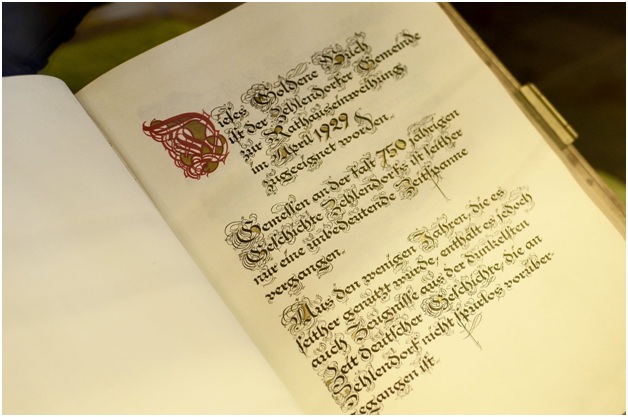Five Historical Facts You Probably Didn’t Know

History is laced with fascinating trivia and mind-boggling facts, many of which aren’t taught in classrooms and textbooks. It’s incredible how unconventional facts and humorous details involving political leaders and monarchs make history endlessly fascinating and enjoyable.
If only our teachers wouldn’t make the subject so insufferable with their boring lectures and humorless historical narratives. To reinvigorate your passion for history, we’ve rounded up some lesser-known historical facts that will make you rethink all your lessons.
Here, take a look:
1. The Tale of Mona Lisa & Pablo Picasso
All art buffs are familiar with the famous tale of Pablo Picasso, eminent painter, playwright, and sculptor. Pablo wore many hats, but as it turned out, art thief was not one of his many talents. In the August of 1911, Leonardo da Vinci’s much-celebrated Mona Lisawent missing from the Louvre. A week later, Joseph Gery Pieret sat down for an interview with the Paris-Journal, making astounding revelations.
Pieret revealed that Pablo and his close friend Apollinaire owned the Iberian sculptures, another prized masterpiece stolen from the Louvre. This revelation made Pablo a leading suspect in the investigation. Later, it was revealed that Pieret had stolen the sculptures and sold them to Pablo. The Spanish painter had bought the statues despite knowing they were stolen property of the Louvre Museum.
After returning the statues, Pablo and Apollinaire were summoned by the court in proceedings related to the Mona Lisa. Due to lack of evidence, both artists were released. In 1913, Picasso was finally exonerated from the accusations when the Mona Lisa was eventually recovered in Florence.
The truth eventually emerged! Vincenzo Peruggia, a Louvre employee, stole the painting to return the masterpiece to its native city. Isn’t it fascinating to explore tales of crime and passion involving masterpieces from great artists? If history fascinates you, consider pursuing a bachelor of arts in history online. You can turn your passion into a rewarding career in journalism, research, and even broadcast media.
2. Pope Gregory IX’s War on Cats of the World
Can you imagine someone advocating for a global warfare campaign to eliminate all the cats in the world? Such meow-phemy!
Pope Gregory IX’s ideologies led to a massive Europe-wide cat killing spree, and people actively participated in exterminating these furry creatures.
In the 13th Century, Pope Gregory IX’s preaching compelled people to believe that black cats were linked with devil worship. Cats emerged as a symbol of satanic rituals and devil-worshiping, encouraging the masses to exterminate them. People in Europe were engulfed with extreme rage, but the scarcity of cats gave rise to the population of rats.
A few decades later, Europe was hit by the catastrophic bubonic plague. We’d like to believe that was karma’s way of avenging millions of cats that were mercilessly put to rest.
3. Turkeys Once Enjoyed the Status of Deities
The graceful turkey bird that we lovingly carve into scrumptiously grilled Thanksgiving dinners were once worshipped as gods.
The Mayan people worshipped these gallinaceous birds, regarding them as a vessel to connect with the gods. The birds were honored and revered with great respect and domesticated with esteemed roles in religious traditions and rites. In Mayan cultures, turkeys are a symbol of prestige and power, and they are widely depicted in archaeology and iconography finds.
4. Ching Shih: The World’s Richest Female Pirate
Did you know that the world’s wealthiest, most successful pirate in history was a woman? That’s right. Her name was Ching Shih, and before conquering the seas and oceans, she worked as a prostitute in China. That was until fate introduced her to the Commander of the Red Flag Feet, who bought and married Ching Shih.
The Commander treated Ching Shih with respect, admired her wisdom, and treated her as a capable leader. Soon, she began revealing her insight as a pirate and became an active fleet commander. Her escapades and bravery won her the respect of her peers, and after her husband’s death, she took control of the reigns.
Under her leadership, the Red Flag Fleet grew enormously, compromising 1200 support ships and more than 300 warships. Ching Shih had an enormous crew of over 80,000 men, women, and children. She was a fierce and charismatic pirate who terrorized the islands of China and surrounding waters. Such was the fear she emanated that the Chinese government had to pardon her fleet to gain relief against raiding.
5. The Tale of Tomatoes on Trial
In 1820, the town of Salem, New Jersey, held a trial against tomatoes. The juicy red fruit was regarded as a symbol of evil with satanic associations. Others believed that the fruit was poisonous and lethal. People thought it to be a prominent cause of deaths and unfortunate health emergencies.
The town rallied against the tangy fruit, and a trial was held. Robert Gibbon Johnson consumed an entire basket of tomatoes in front of large crowds to prove a logical explanation. Salem’s people were undoubtedly stunned to see Robert survive after snacking so lavishly on the “evil” fruit.
Conclusion
Historians often focus on the dark and gory details while recording the narratives of civilizations and dynasties of the past. Tales of quirky anecdotes, twisted facts, and baffling confusions infuse the study of history with fun and entertainment. We hope you enjoyed these facts just as much as we enjoyed regaling them!












